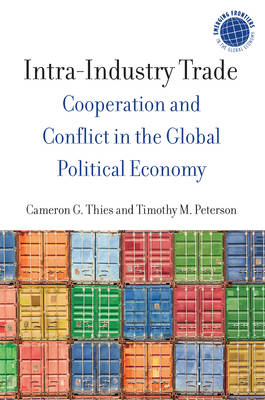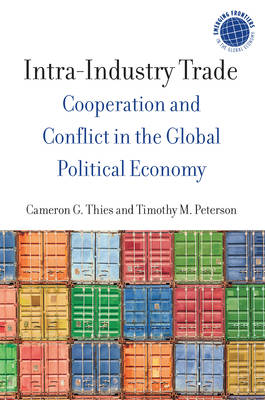
- Retrait gratuit dans votre magasin Club
- 7.000.000 titres dans notre catalogue
- Payer en toute sécurité
- Toujours un magasin près de chez vous
- Retrait gratuit dans votre magasin Club
- 7.000.0000 titres dans notre catalogue
- Payer en toute sécurité
- Toujours un magasin près de chez vous
Intra-Industry Trade
Cooperation and Conflict in the Global Political Economy
Cameron Thies, Timothy M PetersonDescription
Intra-Industry Trade calls for us to rethink what trade most often looks like and how it shapes global institutions, fostering peace among states. Cameron G. Thies and Timothy M. Peterson argue that our understanding of trade has not kept pace with its changing nature in the 21st century; existing models, rooted in Ricardo's theories, regard trade uniformly as taking place between entities and countries that offer different commodities and operate according to the logic of comparative advantage. Though this type of exchange does take place, intra-industry trade--international trade of the same or similar commodities, in which foreign and domestic brands compete--is increasingly prevalent. The authors argue that our current academic and policymaking focus on the total volume of trade, rather than its composition, is misplaced. Trade composition matters, not just because it gives us a fuller understanding of how trade works, but also because intra-industry trade increases the likelihood of positive institutional relations and cooperation between states. To illustrate their point, the authors examine the effects that intra-industry trade has on Preferential Trade Agreement formation, its tendency to lessen World Trade Organization disputes and militarized conflict, and its ability to pave the way for new and fortified alliances.
Spécifications
Parties prenantes
- Auteur(s) :
- Editeur:
Contenu
- Nombre de pages :
- 208
- Langue:
- Anglais
- Collection :
Caractéristiques
- EAN:
- 9780804791335
- Date de parution :
- 28-10-15
- Format:
- Livre relié
- Format numérique:
- Genaaid
- Dimensions :
- 155 mm x 231 mm
- Poids :
- 408 g

Les avis
Nous publions uniquement les avis qui respectent les conditions requises. Consultez nos conditions pour les avis.






